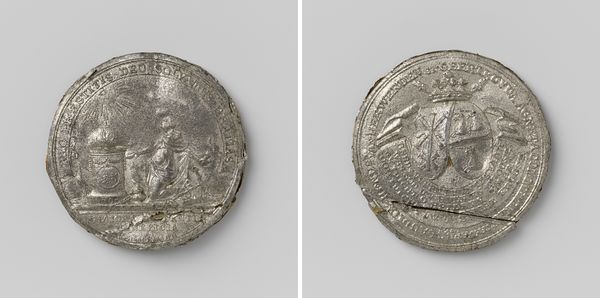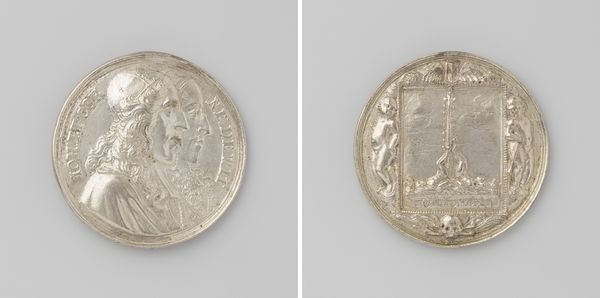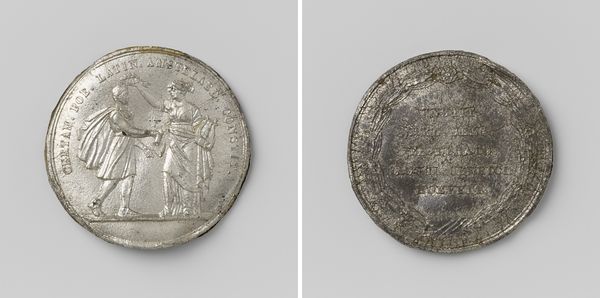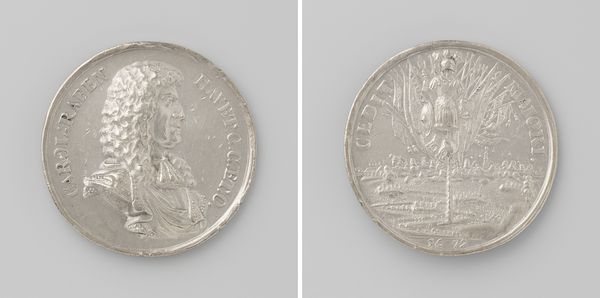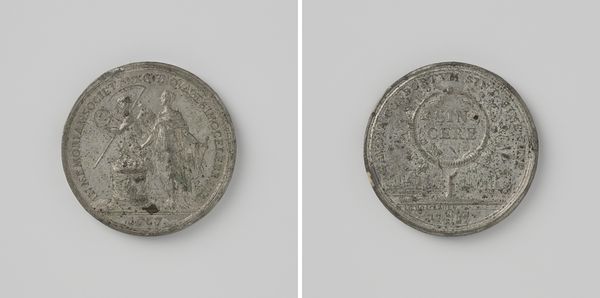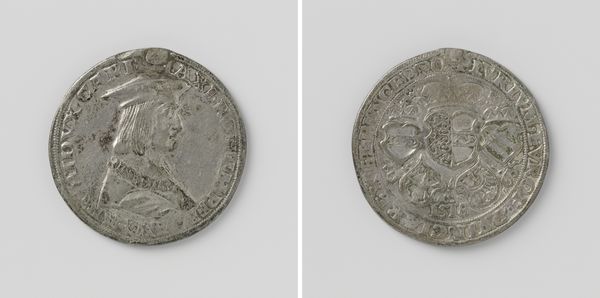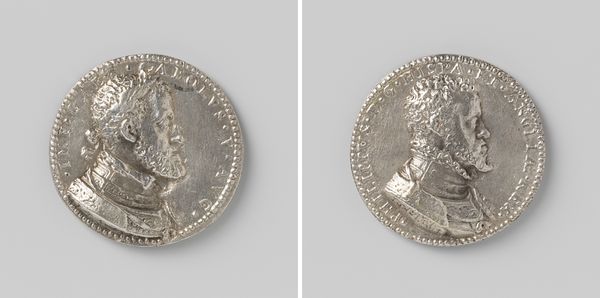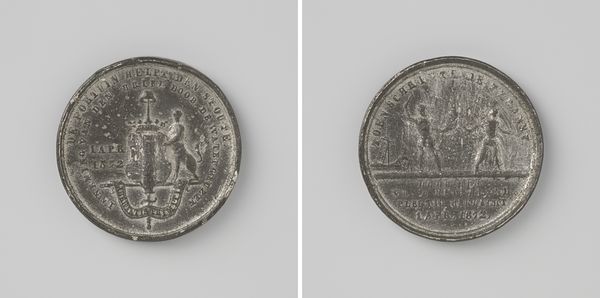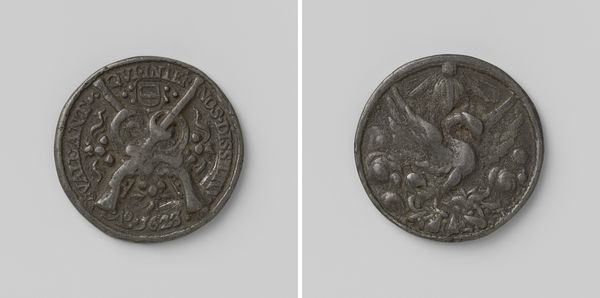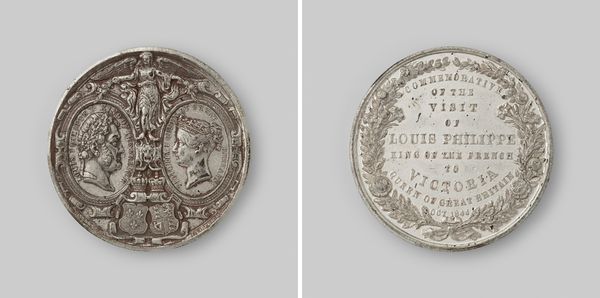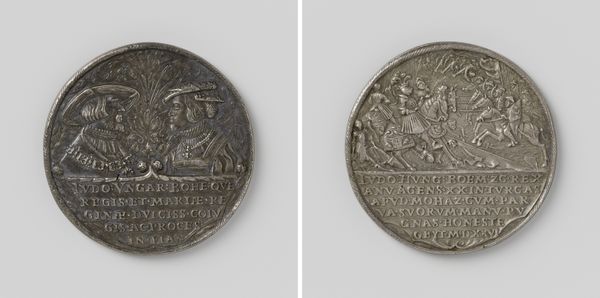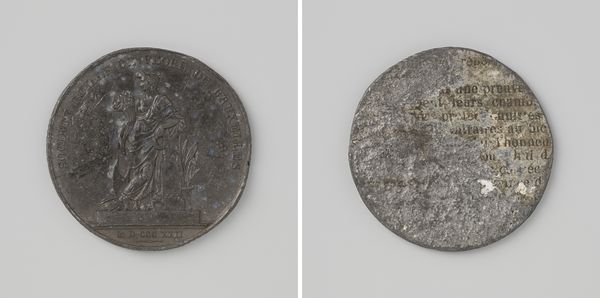
Bezoek van de Lodewijk Filips, koning der Fransen aan Victoria, koningin vanEngeland 1844
0:00
0:00
metal, sculpture
#
portrait
#
medal
#
neoclacissism
#
metal
#
sculpture
#
history-painting
Dimensions: diameter 3.9 cm, weight 16.64 gr
Copyright: Rijks Museum: Open Domain
Editor: Here we have a metal sculpture made in 1844 by Allen & Moore: "Visit of Louis-Philippe, King of the French, to Victoria, Queen of England." It seems like a commemorative coin or medal. What do you see in this piece that I might be missing? Curator: It's definitely a commemorative piece, reflecting a pivotal moment in Anglo-French relations. What strikes me is how this medal presents power and diplomacy through carefully constructed portraits. Consider, whose narrative is being prioritized here, and how does the visual language contribute to that? Editor: I notice the profiles of the monarchs, facing each other, framed by what look like laurel wreaths and royal symbols. Is it typical to represent rulers in profile like this? Curator: Absolutely, the profile harkens back to ancient Roman coinage, invoking a sense of imperial authority and timelessness. However, think about what the profile conceals. What aspects of personality or emotion are deliberately omitted in favor of an idealized representation of power? It's almost a Neoclassical freezing of the subject. Editor: So, the way they chose to portray Queen Victoria and King Louis-Philippe is loaded with political meaning. Is there any historical significance to this visit? Curator: This visit was crucial. It symbolized a strengthening of ties between Britain and France after centuries of conflict, even if temporary. The medal freezes a moment of supposed concord, ignoring the brewing tensions rooted in colonialism and conflicting national interests. Editor: It's interesting how a simple medal can open up such complex layers of history. Thanks for illuminating it! Curator: Indeed, these objects are never simply decorative, they are imbued with intention, reflecting the sociopolitical landscape they were created within. Now, how might we use this knowledge to critically assess similar commemorative artworks from this era?
Comments
No comments
Be the first to comment and join the conversation on the ultimate creative platform.
